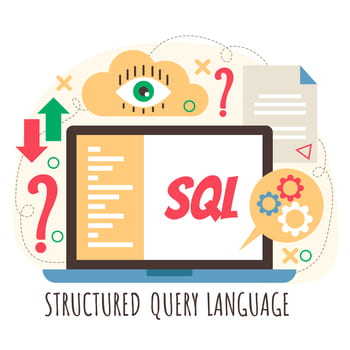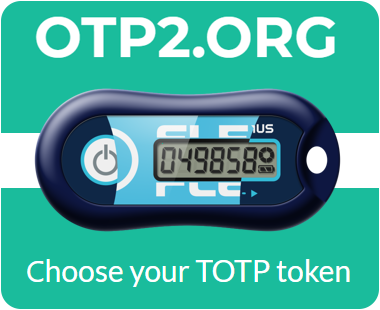
Introduction to SQL Injections
What are SQL injections?
SQL injections are a type of web security vulnerability that allow attackers to execute malicious SQL commands on a web application’s backend database. SQL (Structured Query Language) is a programming language used to manage and manipulate data in a database, and is commonly used in web applications to store and retrieve user data.
In a SQL injection attack, an attacker can inject malicious SQL commands into a web application’s input fields or other user-controlled data, such as URLs or cookies. The application then unwittingly executes these commands as if they were legitimate SQL commands, which can allow the attacker to access or modify sensitive data or even take control of the entire application.
For example, suppose a web application allows users to search for products by entering a keyword in a search box. The application might construct a SQL query like this:
SELECT *
FROM products
WHERE name LIKE '%search_term%'An attacker could inject a malicious SQL command into the search box, like this: OR 1=1; --.
The OR 1=1 statement is a Boolean condition that always evaluates to true, essentially meaning that this portion of the query will also match all rows in the “products” table. This combination of conditions effectively bypasses any authentication and allows the attacker to retrieve all the data in the “products” table.
The --% at the end of the query is a comment that tells the database to ignore the rest of the query. This is done to prevent any errors that may be caused by the attacker’s malicious code.
This would modify the query to become:
SELECT *
FROM products
WHERE name LIKE '%' OR 1=1; --'which would return all products in the database, rather than just the ones matching the user’s search term.
How do SQL injections work?
SQL injection attacks occur when a web application fails to properly validate or sanitize user input, allowing an attacker to inject malicious SQL code into the application’s database. This can result in the attacker gaining unauthorized access to sensitive data, modifying or deleting data, or taking control of the affected system.
There are several common types of SQL injection attacks, including:
- Union-based SQL injection. This technique involves injecting a SQL query that includes a “union” statement to combine data from two or more tables in the database, which can give the attacker access to data they wouldn’t normally have access to.
For example, consider a search form on a website that allows users to search for products based on keywords. The website might use the following SQL query to retrieve the matching products:
SELECT *
FROM products
WHERE name LIKE '%$keyword%'An attacker could enter the following as the search keyword:
' UNION SELECT credit_card_number, expiration_date FROM users --
The resulting query would be:
SELECT *
FROM products
WHERE name LIKE '%' UNION
SELECT credit_card_number, expiration_date
FROM users -- '%This query combines the data from the “products” table with the credit card number and expiration date from the “users” table, which the attacker can then access.
- Error-based SQL injection. This technique involves injecting a SQL query that is designed to generate an error message from the database, which can provide the attacker with information about the database structure or contents.
For example, consider a login form on a website that prompts the user to enter their username and password. The website might use the following SQL query to check if the username and password are valid:
SELECT *
FROM products
WHERE username='$username' AND password='$password'An attacker could enter the following as the username:
' AND (SELECT * FROM (SELECT(SLEEP(5)))ZQSx) --
The resulting query would be:
SELECT *
FROM products
WHERE username='' AND (SELECT * FROM (SELECT(SLEEP(5)))ZQSx) --' AND password='$password'This query causes the database to pause for five seconds, indicating that the injection was successful.
- Blind SQL injection. This technique involves exploiting a vulnerability that doesn’t provide any error messages or other feedback to the attacker, making it more difficult to detect or exploit.
For example, consider a website that displays a message to the user based on whether a particular record exists in the database. The website might use the following SQL query to check for the existence of the record:
SELECT *
FROM records
WHERE id='$id'An attacker could enter the following as the id:
' OR 1=1 AND EXISTS(SELECT * FROM users WHERE username='admin') --
If the record exists in the database, the website will display a message indicating that it does. If the record doesn’t exist, the website won’t display anything, but the attacker can still infer information about the existence of the “admin” user based on whether the message is displayed or not.
These examples demonstrate how dangerous SQL injection attacks can be and how important it is to properly validate and sanitize user input in web applications. Developers can prevent SQL injection attacks by using prepared statements with parameterized queries, input validation and sanitization, and implementing least privilege access control to restrict access to sensitive data.
Why are SQL injections a vulnerability in web applications?
SQL injections can be incredibly damaging to a web application and its users. They can allow attackers to steal sensitive data, modify or delete data, or even take control of the entire application.
In addition to the immediate damage that a successful SQL injection attack can cause, it can also damage a web application’s reputation and erode trust with its users. Customers are increasingly aware of the risks of data breaches and other security incidents, and may be less likely to use a web application that has been compromised.
It’s important for web developers and security professionals to be familiar with these types of attacks and how to prevent them, in order to protect their web applications from SQL injection vulnerabilities.
Overall, understanding SQL injections and their impact on web application security is critical for anyone involved in web development or cybersecurity. In the next sections of this article, we will explore how to detect and protect against SQL injections, and examine real-world examples of SQL injection attacks.
Detecting SQL Injections
SQL injections can be difficult to detect, but there are several tools and techniques that can be used to identify them. Here are some of the most commonly used methods:
- Manual Testing: One of the most basic ways to detect SQL injections is through manual testing. This involves inputting various characters and symbols into a web application’s input fields to see if they trigger any unusual behavior. For example, entering a single quote (‘) into a search box might cause an error message to appear, indicating that the input was not properly sanitized.
- Web Application Scanners: There are many tools available that can scan web applications for vulnerabilities, including SQL injections. These scanners automate the process of testing web applications and can quickly identify vulnerabilities. Some popular web application scanners include OWASP ZAP, Burp Suite, and Acunetix.
- Log File Analysis: Another method for detecting SQL injections is to analyze the web application’s log files. Log files contain information about all the requests made to a web application, including the SQL queries used to retrieve data. By analyzing the log files, it’s possible to identify any suspicious SQL queries that might indicate a SQL injection attack.
- Web Application Firewalls: WAFs are another effective tool for detecting and preventing SQL injections. WAFs work by analyzing incoming web traffic and blocking requests that appear to be malicious. They can be configured to specifically look for SQL injection attacks and block them before they can reach the application server.
- Database Monitoring: Database monitoring tools can also be used to detect SQL injections. These tools monitor the database for any unusual activity, such as a sudden increase in traffic or unauthorized access attempts. Some popular database monitoring tools include:
Database Monitoring: Database monitoring tools can also be used to detect SQL injections. These tools monitor the database for any unusual activity, such as a sudden increase in traffic or unauthorized access attempts. Some popular database monitoring tools include:
- Nagios
- SolarWinds
- Burp Suite
- Acunetix
- Nessus
- OpenVAS
- Qualys
In addition to these tools, there are several indicators that can signal the presence of a SQL injection attack:
- Unusual SQL Queries: One of the most obvious indicators of a SQL injection attack is the presence of unusual SQL queries. These queries might contain unusual characters or keywords, such as
OR 1=1orDROP TABLE. - Error Messages: SQL injection attacks can cause error messages to appear on a web application, indicating that something went wrong. These error messages might include details about the SQL query that caused the error, which can provide clues about the type of attack that’s being used.
- Slow Performance: SQL injection attacks can slow down a web application’s performance, as the attacker is using the web application to execute malicious SQL queries. If a web application suddenly becomes slower than usual, it might be a sign of a SQL injection attack.
It’s important to note that these indicators alone do not necessarily mean that a SQL injection attack is taking place. However, they may be a signal that further investigation is required to determine if an attack is underway.
In conclusion, detecting SQL injections can be challenging, but there are many tools and techniques available that can help. By understanding the indicators of SQL injection attacks and using the right tools, web developers and security professionals can protect their web applications from these vulnerabilities.
Protecting Against SQL Injections
Preventing SQL injections is critical for the security of web applications. There are several methods and best practices that can be implemented to protect against SQL injections.
- Parameterized Queries: One of the most effective ways to prevent SQL injections is to use parameterized queries. Parameterized queries allow developers to pass input parameters separately from the SQL query, which eliminates the possibility of SQL injection attacks.
For example, instead of using a query like this:
SELECT *
FROM users
WHERE username = '$username' AND password = '$password'Developers can use a parameterized query like this:
SELECT *
FROM users
WHERE username = ? AND password = ?This ensures that the input parameters are separate from the SQL query and cannot be manipulated by attackers.
- Stored Procedures: Another effective way to prevent SQL injections is to use stored procedures. Stored procedures are pre-written SQL code that can be called by an application. By using stored procedures, developers can ensure that input validation and other security measures are implemented consistently across the application.
For example, a stored procedure that checks for the existence of a user in the database might look like this:
CREATE PROCEDURE check_user_exists
@username VARCHAR(50)
AS
BEGIN
SELECT *
FROM users
WHERE username = @username
END- Input Sanitization: Input sanitization is the process of validating and cleaning input data to ensure that it conforms to expected values. This can help prevent SQL injections by removing any potentially dangerous input characters.
- Whitelist Input Validation: Whitelist input validation is the process of only allowing input data that matches pre-defined patterns or values. This can help prevent SQL injections by rejecting any input that doesn’t match the expected pattern.
- Minimizing Privileges: Another important way to prevent SQL injections is to minimize privileges. This means ensuring that the database user account used by the web application has only the minimum necessary privileges to perform its tasks. By doing so, if an attacker gains access to the web application, they will only have access to the minimum privileges needed and not be able to perform more dangerous actions.




